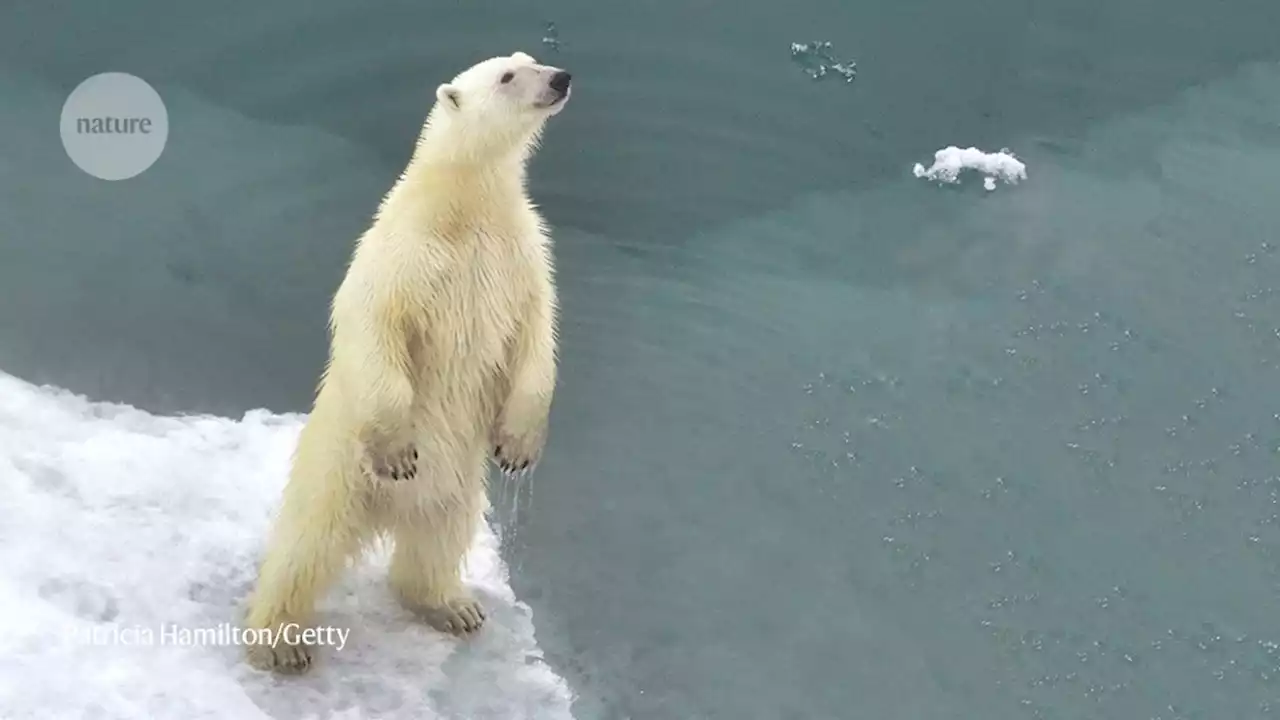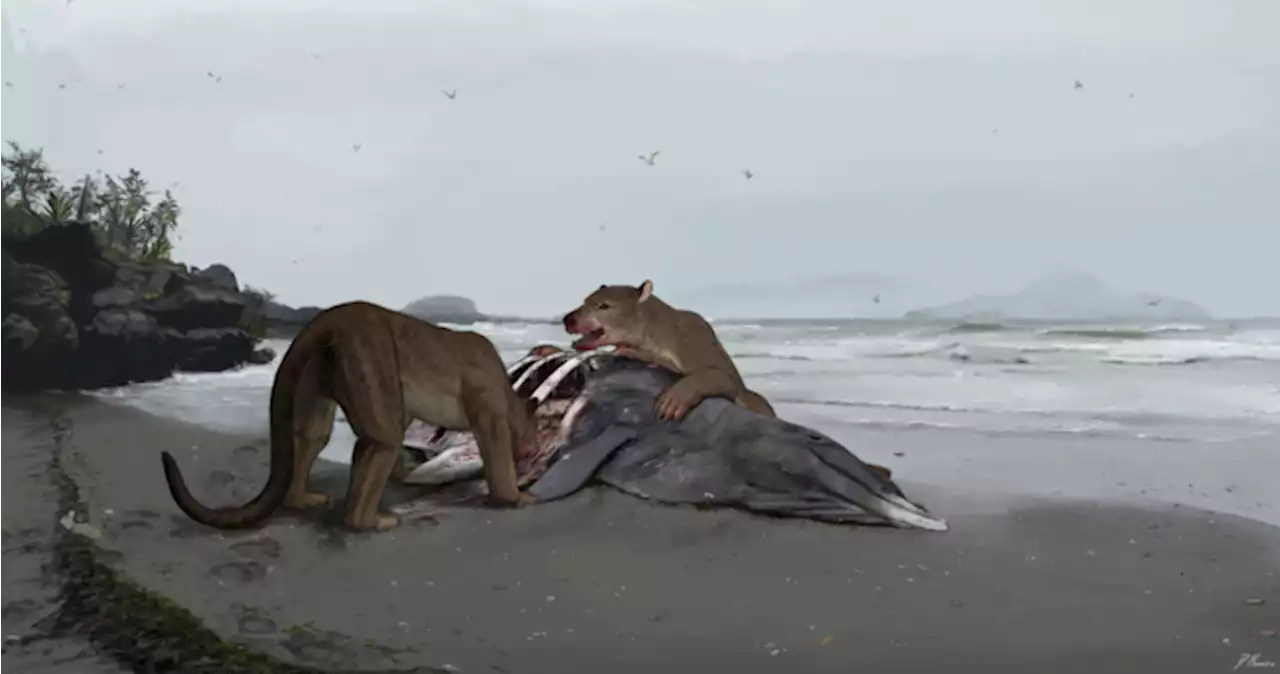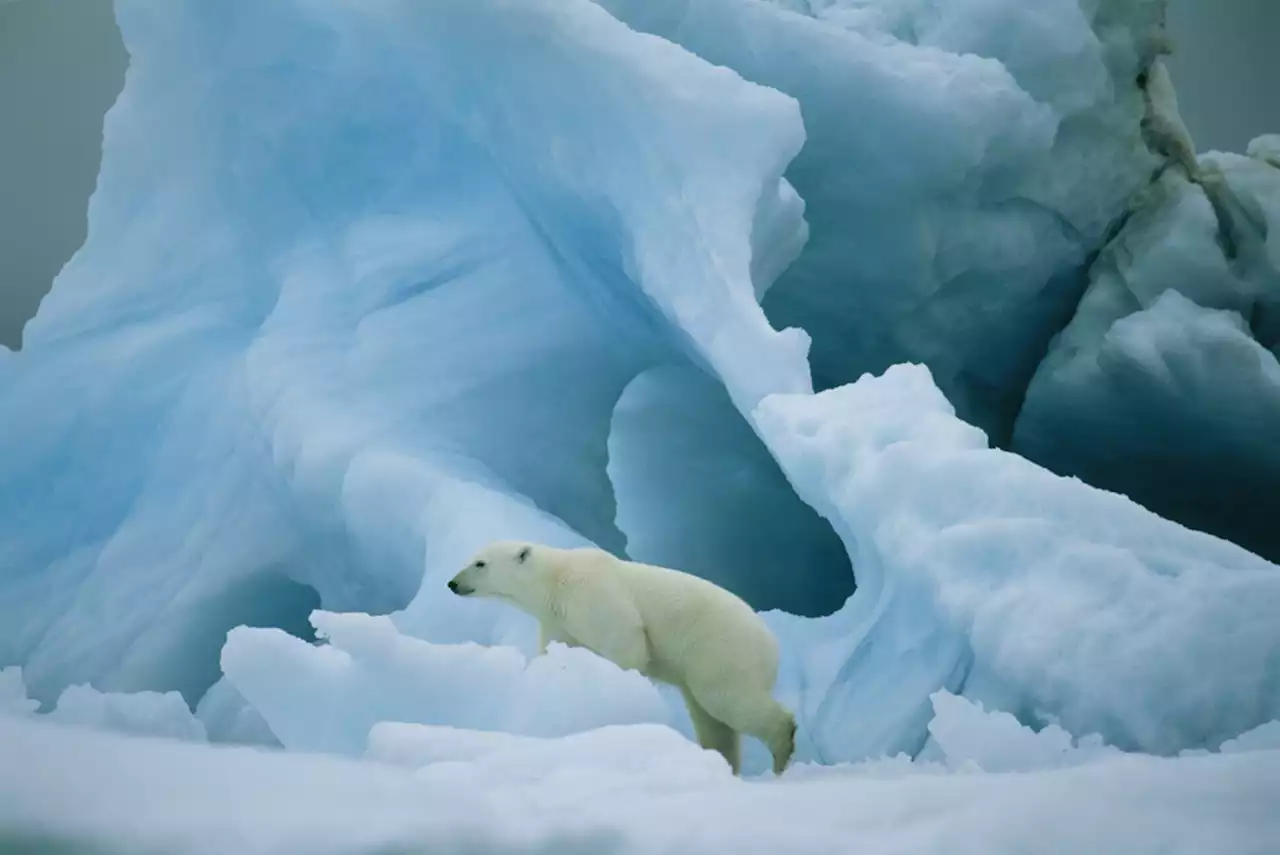Polar bears from southern Greenland cope with melting sea ice by moving to fjords.
wean from their moms, but once the ice melts, they must fast until it returns. Fasting polar bears can survive for up to three to six months, but due to climate change, the time between feeding opportunities is exceeding that threshold.
By comparing the movement and genetic data to 30 years of historical data from northerly polar bear populations, the researchers discovered that the southern population in Greenland was behaviorally and genetically distinct from the northern ones. Compared to typical polar bears, the bears from southern Greenland are relatively inactive. Typical polar bears wander about 24 miles every few days, but the southern bears stay close to their fjords, moving only about six miles in the same time span.
In addition to behaving differently, the southern polar bears were also genetically unique. Their DNA diverged from their northern neighbors, suggesting that the groups were not interbreeding. The team believes that the harsh geography of southern Greenland, with its steep mountains, vast ice sheets and charging rivers isolated the group several hundred years ago.
Malaysia Latest News, Malaysia Headlines
Similar News:You can also read news stories similar to this one that we have collected from other news sources.
 Polar bear population discovered that can survive with little sea iceA group of polar bears has adapted to hunting without sea ice, which suggests some members of the species might survive as the Arctic heats up
Polar bear population discovered that can survive with little sea iceA group of polar bears has adapted to hunting without sea ice, which suggests some members of the species might survive as the Arctic heats up
Read more »
 Polar bear population discovered that can survive without sea iceA group of polar bears has adapted to hunting without sea ice, which suggests some members of the species might survive as the Arctic heats up
Polar bear population discovered that can survive without sea iceA group of polar bears has adapted to hunting without sea ice, which suggests some members of the species might survive as the Arctic heats up
Read more »
 Polar bear population discovered that can survive without sea iceA group of polar bears has adapted to hunting without sea ice, which suggests some members of the species might survive as the Arctic heats up
Polar bear population discovered that can survive without sea iceA group of polar bears has adapted to hunting without sea ice, which suggests some members of the species might survive as the Arctic heats up
Read more »
 Polar bear population discovered that can survive with little sea iceA group of polar bears has adapted to hunting without sea ice, which suggests some members of the species might survive as the Arctic heats up
Polar bear population discovered that can survive with little sea iceA group of polar bears has adapted to hunting without sea ice, which suggests some members of the species might survive as the Arctic heats up
Read more »
 How Bodegas Became Cultural Centers for Beauty'To unknowing passersby, it's a convenience store. To New York City dwellers, it's a bodega. And for writer Xochitl Gonzalez, it's a beauty supply store, runway, and most significantly, a place to connect with her community and culture.'
How Bodegas Became Cultural Centers for Beauty'To unknowing passersby, it's a convenience store. To New York City dwellers, it's a bodega. And for writer Xochitl Gonzalez, it's a beauty supply store, runway, and most significantly, a place to connect with her community and culture.'
Read more »
 A New Species Of Prehistoric 'Bear-Dog' Discovered In The PyreneesA jaw bone fossil could hold the key in identifying an ancient 'bear-dog' species. Find out more below.
A New Species Of Prehistoric 'Bear-Dog' Discovered In The PyreneesA jaw bone fossil could hold the key in identifying an ancient 'bear-dog' species. Find out more below.
Read more »
